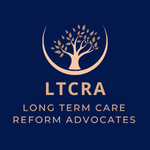Caring for aging loved ones is a challenge millions of families face, and it’s only getting harder. Long term care reform isn’t just a buzzword; it’s a call to fix a broken system that too often leaves seniors and caregivers behind. A growing number of people need services that support their basic needs, but rising costs and outdated policies put families in tough spots. If you’ve ever juggled work, family, and caregiving, you know the pressure. Keep reading to see why this issue matters to everyone, and how you can push for a future where quality care is possible for all.
Why Long Term Care Reform Matters Now
The U.S. has more people over age 65 than ever, and the number keeps climbing. That means higher demand for services like in-home aids, assisted living, and nursing homes. Unfortunately, our system isn't set up to meet this need.
High costs keep many from getting the help they deserve. Even a modest care facility can cost more than some families earn in a year. Medicaid covers some, but not all, and private insurance usually falls short. For a closer look at why care costs are such a big worry for older adults, the John A. Hartford Foundation outlines survey results showing widespread financial anxiety.
Caregiver burnout is real, too. Most long-term care comes from family members who often get little support and few breaks. Many workers have to quit jobs or cut hours, straining their own finances and mental health.
Quality concerns paint a stark picture as well. Some care facilities don’t provide enough training or oversight. This often leads to safety issues and less dignity for residents.
We can’t ignore the need for long term care reform anymore. Every person deserves to age with respect, support, and choice.
What Changes Are Needed in Long Term Care
There’s no magic fix, but three key areas could transform how we care for older adults: affordability, quality, and caregiver support. Real progress comes from focused action in each area.
Making Long Term Care More Affordable
Money should not be the deciding factor for safe, comfortable aging. Here’s what stands in the way:
- Sky-high prices: Monthly costs for assisted living, nursing homes, or even at-home care keep going up.
- Insurance gaps: Many folks discover too late that Medicare doesn’t cover most long-term care, and private insurance options are either too expensive or too limited.
- Medicaid hurdles: Medicaid helps, but you need to spend down nearly all your assets to qualify in most states. That’s a tough pill to swallow.
Families looking for the real numbers can check out the state-by-state cost breakdown for long term care services.
Ideas for reform:
- Let’s create public insurance options so everyone pays in a little throughout their life and gets coverage when they need it.
- Subsidies or tax breaks could help middle-class families keep their loved ones safe without going broke.
- Streamline Medicaid so people don’t lose everything just to get help.
Improving Quality of Care
Affordability must go hand-in-hand with quality. Bad care is not just frustrating; it can actually shorten lives.
- Staff training counts: Caring for people with dementia or disabilities takes real skill. More training and continuing education should be the norm.
- Safe, respectful environments: Oversight, regular inspections, and clear reporting help root out neglect or abuse.
- Resident rights: Every senior deserves dignity and a say in their daily routine.
For families who want to make a difference on this front, volunteering can give a direct voice to quality improvements. Consider checking out LTC reform volunteer opportunities if you’re ready to help push for better care.
Supporting Family Caregivers
Behind every elder is usually a family member making personal sacrifices. Many caregivers don’t get paid. Others feel lost without basic training or someone to spell them for a weekend.
As the need for unpaid care rises, so does the call for real help. A new federal effort, the 2022 National Strategy to Support Family Caregivers, maps out ways the government is starting to take family needs seriously.
What could help caregivers most?
- Training programs: Simple video courses or local seminars could boost confidence and improve safety.
- Respite care: Short-term help gives unpaid caregivers much-needed breaks, lowering stress and reducing mistakes.
- Direct financial support: Tax credits or small stipends go a long way to recognize and offset the work caregivers do every day.
Conclusion
Long term care reform affects nearly every family. The stakes are too high to sit this one out. You can speak up today: let your elected officials know that affordable, quality care and real support for families matter to you.
Want to get involved even more? Consider reaching out to long-term care reform advocates and to connect with others pushing for better solutions.
Change never comes easy, but when ordinary people join together and raise their voices, big things happen. Your call, letter, or even a shared story can help build a system that treats every senior and every caregiver with the dignity they deserve.


